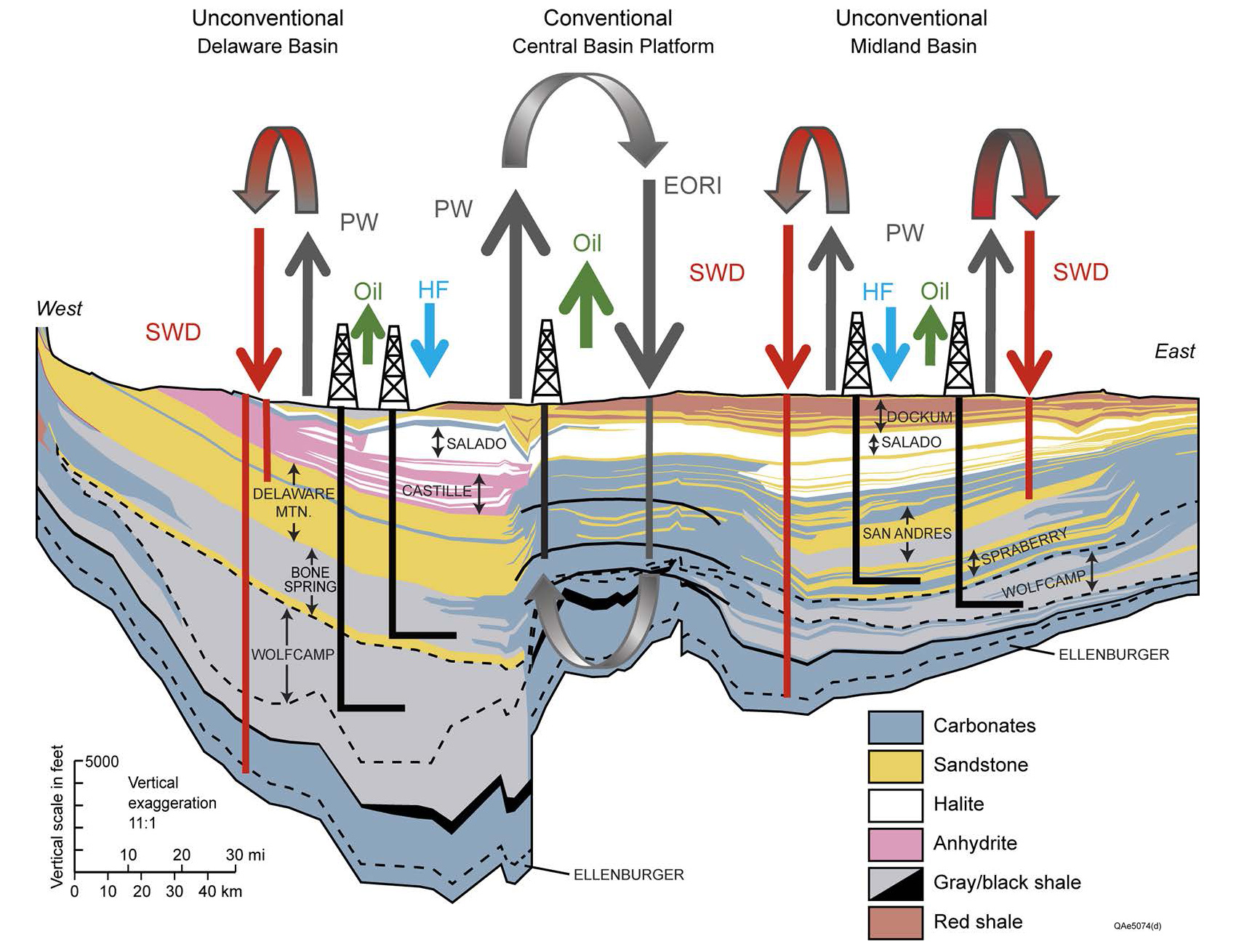Shell-UT Unconventional Research (SUTUR)
Objectives/Purpose
Shell-UT Unconventional Research (SUTUR) is a strategic collaboration to improve the efficiency, effectiveness and sustainability of exploration, development and production of unconventional oil and gas resources through applied research. The collaborative effort brings together UT researchers at the Bureau of Economic Geology and Department of Geological Sciences at the Jackson School of Geosciences, the CPGE at the Cockrell School of Engineering, and engineers, geologists and scientists at the Shell R&D teams to address critical problems in unconventional oil and gas.
Since the inception of SUTUR in 2011, this focused collaboration has demonstrated the value of an integrated, multidisciplinary approach to problem solving. UT offers deep and broad strengths across geosciences and engineering as well as environmental science (including water), policy, law, and business. SUTUR provides a platform for Shell to leverage UT expertise in these areas and globally apply novel approaches to unconventional resources.
Collaboration
UT and Shell have a longstanding and evolving cooperative vision for research to develop energy sources. The Bureau of Economic Geology is the State Geological Survey of Texas and the oldest organized research unit at UT. The Bureau has a long and successful track record in leading major energy, economic, and environmental applied research. The Jackson School of Geosciences and UT's Cockrell School of Engineering (CSE) provide a wide-spectrum of research expertise in engineering and geosciences related to energy. CSE's Department of Petroleum and Geosystems Engineering (PGE), the top-ranked petroleum engineering department in the U.S, has an international reputation with broad expertise and numerous successful joint industry projects and consortia.
For SUTUR, the Bureau of Economic Geology is tasked with coordinating multiple departments and research disciplines to solve fundamental problems and demonstrate real-world application. The established culture of cross-disciplinary collaboration between academic departments with the petroleum industry makes for a valued partnership.
Structure
Shell, with guidance from a steering committee, identifies multi-year business-driven research challenges for SUTUR. Projects to address the challenges are proposed, approved, and conducted collaboratively by UT and Shell scientists and reviewed annually. The steering committee, which comprises two representatives each from Shell and UT, meets twice a year to assess current projects and identify new prospective efforts. The current members of the committee are:
Shell
Dr. Claudia Hackbarth: Technology VP in the Unconventional Resources content area
Gwen Anson: Technology Manager in the Unconventional Resources content area
University of Texas at Austin
Dr. Scott W. Tinker: Director, Bureau of Economic Geology
Dr. Jon Olson: Professor and Chair, Petroleum and Geosystems Engineering
Project Description
SUTUR I
Projects in the first phase of SUTUR, selected in 2011–12, were relatively independent of each other. As of 2016, all have been completed except one, which was extended for a second phase. Projects included fundamental investigations into fracturing, rock-property characterization, methods of improved recovery from ultra-low permeability formations, tight oil–specific topics, water-resource availability, and seismic attributes of shale deposits. To review a list of completed SUTUR I Projects, click here.
SUTUR II
A new phase of SUTUR, launched in 2016, addresses a single large, multifaceted problem rather than multiple individual projects. SUTUR II is an integrated study of the geologic origin of water produced from oil-bearing shales of the Delaware Basin in West Texas. Nine closely related research projects characterize, estimate, and model factors that control produced-water volumes, which are higher than those of other shale basins. The projects work with a common data set and maintain coordination via bi-weekly, monthly, and bi-annual meetings that include both Shell R&D and Shell Permian-asset stakeholders.

A cross-sectional representation of the geologic structure of the Permian Basin showing conventional and conventional reservoirs. Illustration from Water Issues Related to Transitioning from Conventional to Unconventional Oil Production in the Permian Basin, Bridget R. Scanlon, Robert C. Reedy, Frank Male, and Mark Walsh, 2017.



